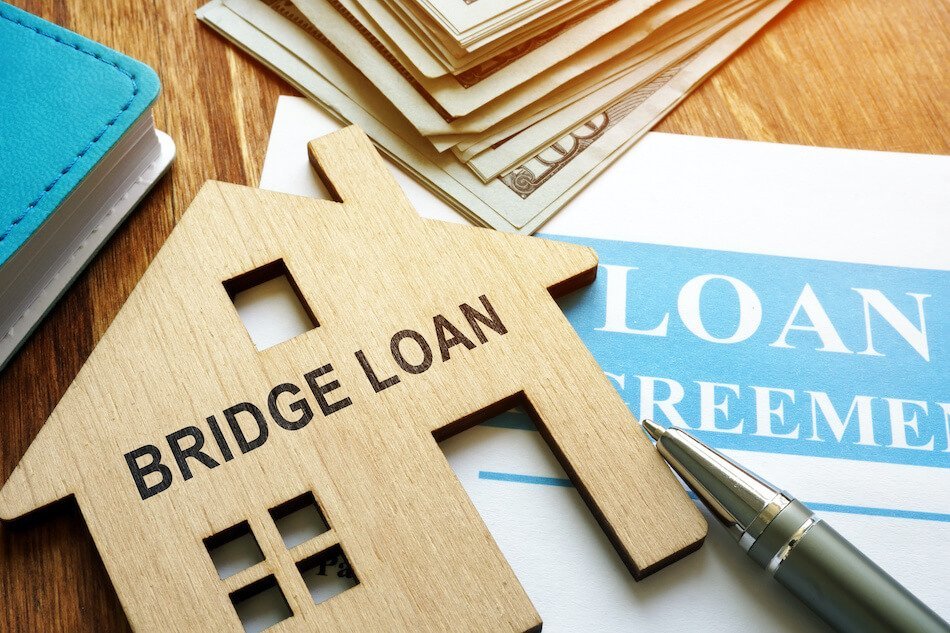13 Things to Know About Financing With Commercial Bridge Loans
Posted by Gary Ashton on Wednesday, March 27th, 2024 at 8:53am.
 Sometimes an individual or a business wants to buy or renovate commercial real estate, but long-term financing at a reasonable rate simply isn't available. Maybe the property needs to be improved before a bank will write a traditional mortgage. Perhaps there's a loan or other funding on the horizon, but the property buyer or owner needs to act right now. Looking to quickly secure capital for your real estate investments? Commercial bridge loans are crucial for bridging the gap between immediate funding needs and long-term financial strategies in the dynamic real estate market. They provide flexibility to act swiftly, but come with higher interest rates and fees due to their short-term nature. If you want to be successful with commercial real estate, it's essential to use all the tools at your disposal. In the instances listed above, a bridge loan may offer the solution. Keep reading to learn how to use a bridge loan when investing in commercial real estate.
Sometimes an individual or a business wants to buy or renovate commercial real estate, but long-term financing at a reasonable rate simply isn't available. Maybe the property needs to be improved before a bank will write a traditional mortgage. Perhaps there's a loan or other funding on the horizon, but the property buyer or owner needs to act right now. Looking to quickly secure capital for your real estate investments? Commercial bridge loans are crucial for bridging the gap between immediate funding needs and long-term financial strategies in the dynamic real estate market. They provide flexibility to act swiftly, but come with higher interest rates and fees due to their short-term nature. If you want to be successful with commercial real estate, it's essential to use all the tools at your disposal. In the instances listed above, a bridge loan may offer the solution. Keep reading to learn how to use a bridge loan when investing in commercial real estate.
For informational purposes only. Always consult with a licensed mortgage or home loan professional before proceeding with any real estate transaction.
What Is a Bridge Loan?
A bridge loan, also known as a gap loan or gap funding, is a short-term loan that lasts long enough to either put a long-term mortgage in place or sell the property and pay off the bridge loan. It's typically six months to a year. The loan can be used either to buy commercial property or improve the property the borrower already owns. Commercial bridge loans are available for many commercial properties, including apartment buildings and retail, office, and industrial properties.
The commercial property may be a new building under construction or an existing building. The borrower might be looking to sell shortly and pay off the loan or continue owning the property as an investment. Collateral, often the property being purchased or renovated, secures these loans, with individual project needs dictating the loan amounts and terms. While commercial bridge loans offer rapid access to funds, it's important to carefully consider the higher costs and shorter repayment terms associated with this type of financing.
Reasons for a Commercial Bridge Loan
There are several situations where a commercial property investor might apply for a bridge loan:
- If a borrower is temporarily unable to qualify for a mortgage with favorable terms, they may borrow via a bridge and buy time to clear up credit issues.
- A housing developer might use a bridge loan to finance construction, planning to pay it when the homes are sold.
- An investor might use a bridge loan to redevelop a historic property to the point where the property becomes more valuable. The property may then qualify for a long-term mortgage, or, alternately, it might be sold at a profit to repay the loan.
- A would-be purchaser may have a small window to close a deal and might need the money too quickly for acceptable long-term financing to be arranged.
- There might be financing such as a Small Business Association loan which isn't going to come through for a few months.
- The investor might be anticipating income that won't be available right away. An example might be the expected sale of an unrelated property.
- A borrower might wish to buy raw land or demolish the current buildings and create something that they would either sell or continue to own.
Qualifying Criteria
The acceptable loan-to-value ratio (LTV), which compares the loan amount to the worth of the property, is lower than for a conventional mortgage. Banks will often lend up to 80 percent of the property's value for a traditional mortgage. They're protected not only by the value of the property but by how thoroughly they vetted the ability of the borrower to repay.
On the other hand, bridge loan providers will typically lend only around 50 percent of the value. An investor acquiring a property will generally need to put down a significant sum to make a bridge loan work.
A bridge loan for renovation or completion of a construction project will be based not only on LTV but also on loan-to-cost (LTC) and after-repair value (ARV). LTC is the loan amount divided by the construction cost. Most bridge lenders insist on an LTC of no more than 80 to 85 percent. In other words, a borrower usually can't get a bridge loan for the entire cost of the renewal project but must have other funding for at least 15 to 20 percent of it.
ARV is what the property will be worth after work is complete. It's a number that's based on an appraiser's estimate. The lenders typically won't approve more than 70 to 75 percent of ARV.
Traditional mortgage lenders usually have a clearly defined set of rules for determining interest rates. With bridge loans, the rates are higher, but there's more chance of negotiation between lender and borrower. If the borrower has a history with the lender, that rate could be lower.
Where to Get a Commercial Bridge Loan
You can obtain a commercial bridge loan from banks, direct lenders, or online lenders. These institutions offer different terms and rates, so it's essential to compare options to find the best fit for your business needs.
Banks and credit unions may have stricter requirements, while online lenders might provide quicker access to funds for time-sensitive opportunities.
Banks & Credit Unions
When seeking a commercial bridge loan, consider turning to banks and credit unions as reliable sources for short-term financing options. These traditional institutions offer commercial bridge loans with varying terms and conditions. Borrowers can access these loans with established lending criteria, which may include detailed financial information and credit checks for approval.
Banks and credit unions provide competitive rates and terms for qualified borrowers seeking commercial bridge loans. By utilizing these trusted sources, businesses can secure the short-term financing needed to bridge financial gaps and seize time-sensitive opportunities.
Direct lenders
Direct lenders focus on offering quick, flexible, and personalized financing options to cater to the specific requirements of commercial real estate investors. They provide competitive rates, swift approval processes, and diverse loan structures to support property acquisitions, renovations, and repositioning projects.
Digital Lenders
Online lenders serve as convenient and efficient options for obtaining commercial bridge loans to meet immediate financing needs. These lenders offer fast approval processes, allowing borrowers quick access to funds. By comparing different online lenders, borrowers can find competitive rates and terms that suit their financial requirements. Additionally, online lenders often have streamlined application processes, making it easier and more convenient for businesses to secure the financing they need promptly.
Borrowers can take advantage of online resources to educate themselves on the criteria and requirements for obtaining commercial bridge loans, ensuring a smooth and efficient borrowing experience. With online lenders, businesses can access the capital they need to seize profitable opportunities without delay.
Pros & Cons of Bridge Loans
The pros and cons of bridge loans are one of the most important things to know about commercial real estate. Understanding the benefits and drawbacks will help you make an informed decision about whether a bridge loan aligns with your specific financial needs and goals.
Pros
For businesses seeking quick access to capital with flexibility based on property value rather than cash flow, commercial bridge loans offer a viable financing solution. These loans are beneficial for real estate ventures, allowing you to leverage property assets efficiently.
With commercial bridge loans, you can secure funding swiftly, enabling you to capitalize on time-sensitive opportunities in the real estate market. The appeal lies in the ability to access capital without the constraints of traditional loan requirements, making them ideal for property renovations or investments.
Despite higher interest rates, the speed of acquisition and the ability to capitalize on profitable real estate ventures make commercial bridge loans an attractive option for businesses looking to maximize their property investments.
Cons
Commercial bridge loans, despite providing quick access to capital, come with higher interest rates and fees compared to traditional loans. The interest rates for these loans typically range from 10.9%, significantly higher than those of conventional loans.
Additionally, bridge loans for commercial properties often have a relatively short loan term of around 25 months, requiring businesses to secure long-term financing options if they aren't able to sell the commercial property in time. Lenders may also add an average of 3.1% in points to bridge loans, increasing the overall cost of borrowing.
While these loans offer the benefit of immediate access to funds for time-sensitive opportunities, it's essential to consider the higher costs associated with them when evaluating whether a commercial bridge loan is the right financing option for your business.
Bridge Loan vs Commercial Equity Line Of Credit (CELOC)
A commercial bridge loan offers short-term financing for immediate opportunities in commercial real estate, such as property acquisitions or renovations. On the other hand, a CELOC is a revolving line of credit secured by commercial real estate, allowing borrowers to access funds as needed, akin to a credit card, using their property as collateral.
| Bridge Loan | CELOC |
|---|---|
| Short term loan | Long-term loan (5-10 years) |
| Uses current property as collateral | Requires application + current property as collateral |
| 65% - 70% Max LTV | 70%-75% Max LTV |
When To Use a Bridge Loan in a Commercial Real Estate Deal
A commercial bridge loan may be suitable when there's a profit to be made, and there isn't a good deal on a traditional mortgage available. A bridge loan is often a high-risk, high-reward transaction for borrowers and lenders. The lender stands to earn a handsome interest rate. The borrower hopes to resell the property at a gain or secure a long-term mortgage and profitably operate the commercial property on an ongoing basis.
For informational purposes only. Always consult with a licensed mortgage or home loan professional before proceeding with any real estate transaction.

Gary Ashton
The Ashton Real Estate Group of RE/MAX Advantage
The #1 RE/MAX team in the World!
